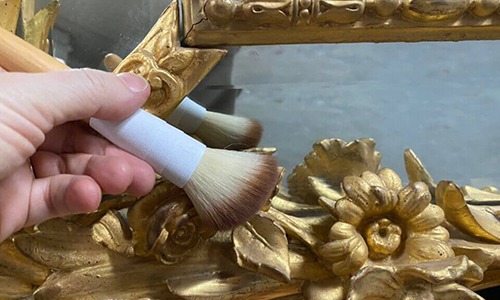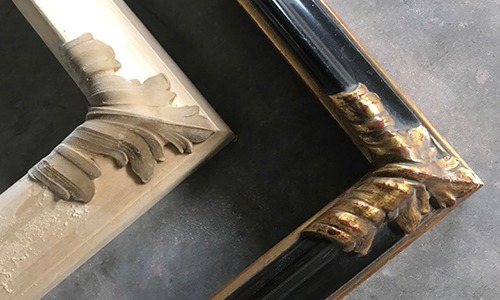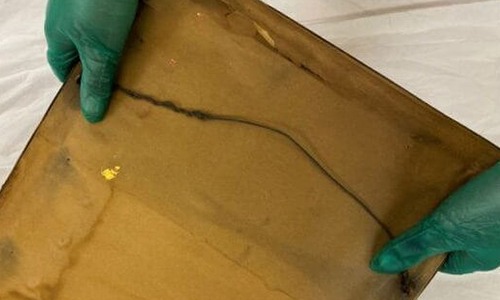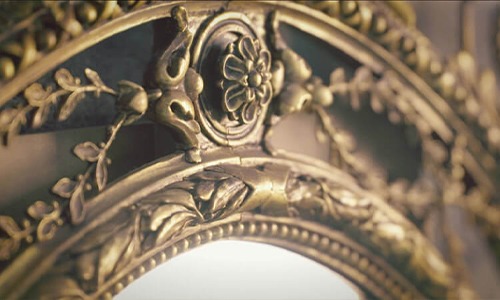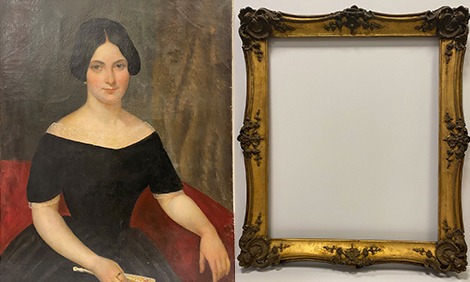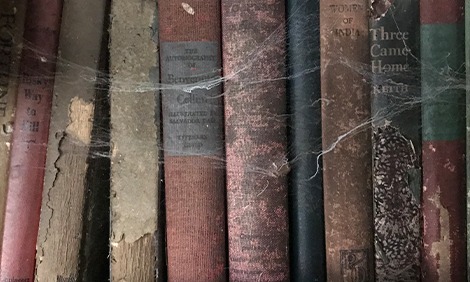
April Hann Lanford, Principal of Artifact Services
Eye of the Storm
By April Hann Lanford
It is hard to believe, but this year marks the 15th anniversary of Hurricane Katrina. In 2005, Katrina was the costliest natural disaster in our country’s history, causing more than $125 billion in damage, as well as one of the five deadliest. More than 1,800 people died in the hurricane and the subsequent floods.
Hurricane season is upon us once again and the National Oceanic and Atmospheric Administration predict that it will be an extremely active season.
Hurricanes and heavy storms can bring an onslaught of rain, which can result in flooding, loss of power, and structural damage. Exposure to water, elevated levels of humidity, and mold can be disastrous to collections of antiques, fine art, and family heirlooms.
While it is understood that the best approach is to evacuate items to safety beforehand, you may be faced with limitations of time, packing materials, or a secured secondary space to relocate the items.
I have worked on the recovery of many storm-damaged collections over the past fifteen years. If you are unable to evacuate your collection, the following are recommendations to help protect your pieces and assist with potential recovery in the future.
• Maintain an updated inventory of your collection and have a digital copy available to share.
• Identify three to five priority items.
• Relocate items to interior rooms, away from windows and exterior doors.
• Items should be elevated off the floor by three inches or higher. If you anticipate flooding, small items, side chairs, etc., can be carefully placed on top of larger furniture items to help reduce localized damage to feet.
• Photograph or video the collection for future reference. While recording, walk through the house, open drawers, cabinets, and closets to document their contents. This is not only helpful for antiques and fine art but also will aid with other items in the event you have to make an insurance claim.
• Designate a trusted local contact to access and check on your home and collection in the event you are not able to.
Ideally, this last-minute preparation is enough to prevent damage from a pending storm since areas and buildings can sustain radically different damage within even a small neighborhood. Typically, when you think of storm damage, you think of water. However, storms can cause power outages, which leads to the loss of air conditioning, increased humidity, and eventual mold. Time is of the essence and successful recovery can feel like a race against the clock.
The following are a few tips I always keep in mind when saving collections after a storm.
• Check with local authorities to confirm that it is safe to return home.
• Before entering your home, make sure you are wearing the proper PPE for the environment.
• It may seem counter-intuitive, but take your time. Remember you are working in a compromised environment. There may be limited lighting, the floors might be wet and slippery, wood floorboards could be warped. The items you are handling might also be compromised and require even greater attention when moving.
• Be mindful that floodwater may contain microorganisms and other harmful contaminants.
• Upon arrival, document the space and collection with photos and video.
• Create an inventory and identify priority items for care.
• Contact a conservator, the sooner the items can be addressed, the better the results for treatment.
• Standing water can contribute to further damage; remove water from items as soon as possible.
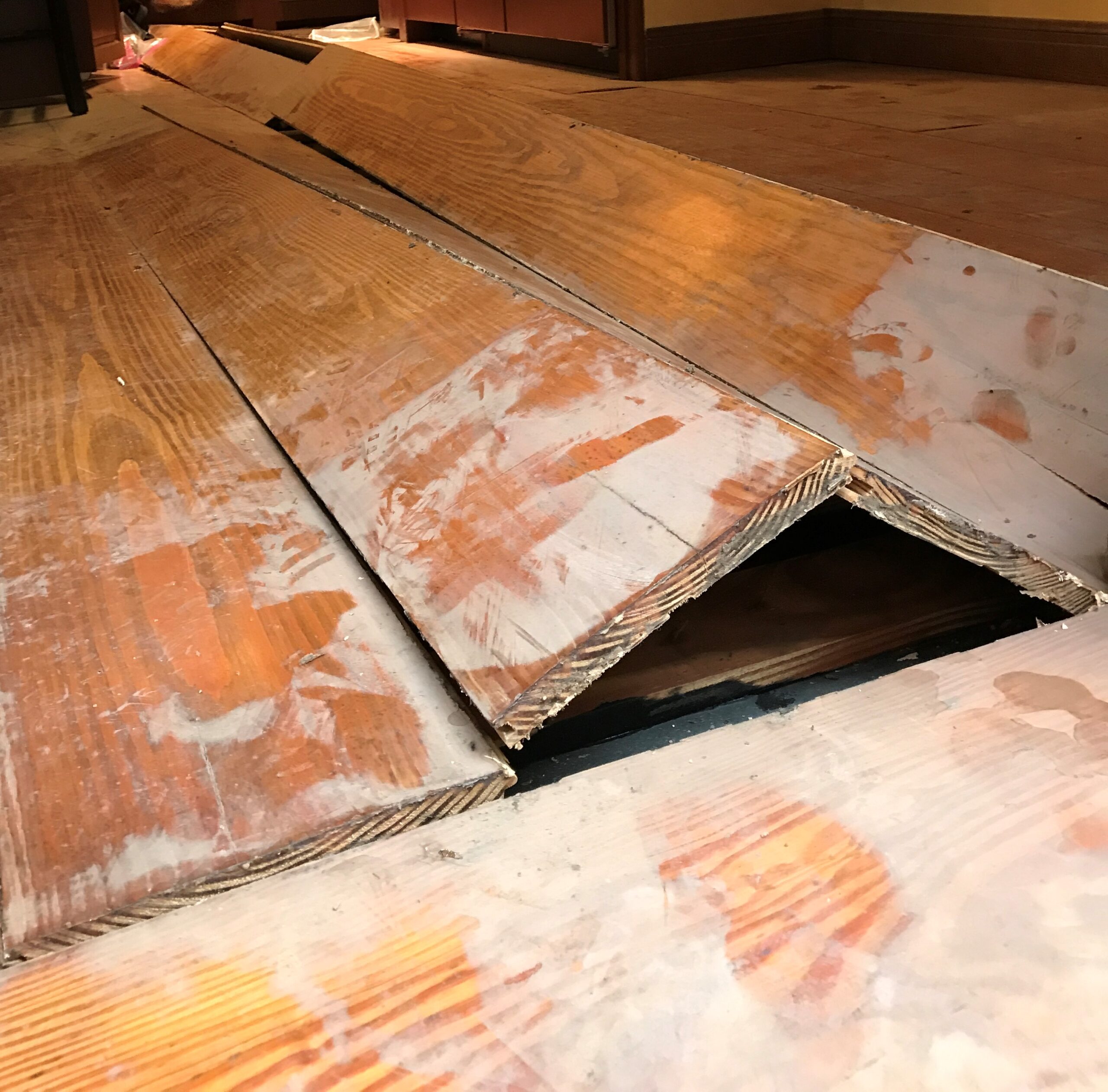
Warped floorboard can be slippery and create a treacherous environment for removing fragile items after a storm.
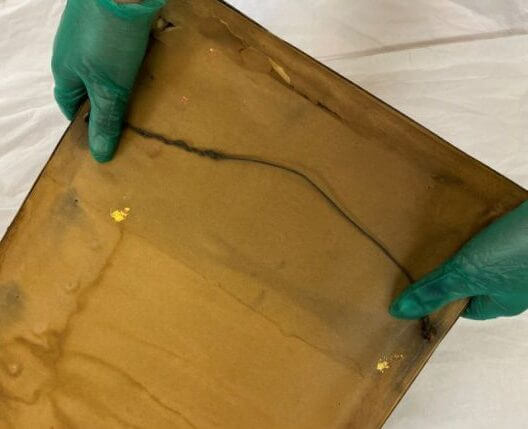
• Never assume that plastic bags or items stored in plastic bins are securely sealed. Water can seep into these containers and then remain held within, causing further damage.
• As safety permits, remove drawers and wet items from the furniture. This will reduce weight and will assist in the drying of the items and the piece. Stuck or swollen drawers should never be forced open.
• Relocate items to a climate-controlled environment.
• Wet items should be passively dried in a well-ventilated and illuminated space.
• Retain all detached elements and place them in labeled envelopes so they can be used in their future repair.
There are many variables to consider when safeguarding collections and recovering items from storm damage. While a lot of collectors do not have access to offsite storage to safely evacuate their items when a storm threatens, these preventive steps can go a long way. Even a sixty-second video walkthrough of a collection can significantly help with recovery efforts in the future.
During the aftermath when local resources for response and recovery are inundated, taking the proactive measures listed above can significantly impact the successful recovery of your collection.
The most important lesson to remember is to never assume a piece is a loss. The field of conservation offers a combination of traditional techniques and modern technology, which can yield a lot of successful options for the treatment of a piece.
Always remember, the sooner an item can be addressed, the better the results. In the end, the recovery after the storm will be a part of your story, as well as the pieces.
Click here to view original article that was published in Antique Trader.
Eye of the Storm, by April Hann Lanford
Our collection of educational articles about
custom framing, collection care, and emergency response are updated regularly.
Click on each topic below for a menu of corresponding articles.
Collection Care Articles
By April Hann Lanford
Our collection of educational articles provides an introduction to many topics about the preservation and conservation of fine art, antiques, and fine furniture.
Topics are often written as a result of questions provided by our clients.
Emergency Care Articles
By April Hann Lanford
Our emergency care articles are a helpful introduction to how to prevent damage through preventative measures or art and antique collections. When a disaster strikes, prompt response and taking the right steps can mitigate further damage.
Antique Trader Articles
By April Hann Lanford
Visit our collection of articles that have been published in Antique Trader.
antiquetrader
For more than 60 years Antique Trader has been inspiring, informing, and entertaining the collecting community with timely...
Projects
By April Hann Lanford
A selection of Artifact’s most recent projects highlighting our conservation and preservation work. We present each unique story describing the conservation process from reviewing the history, cause of loss, and condition to the steps of the treatment.
Glossary
A collection of art and conservation terms along with makers and firms compiled into a glossary and highlighted throughout our website for reference.
We are available to assist you
Main Location
840 N. Milwaukee Ave, Chicago IL 60642
Mon-Fri: 9:00 am - 5:30 pm
Sat: 10:00 am-4:00 pm
Sun: Closed
Complimentary parking is available in the loading zone in front of the building
We can also serve you by appointment at our other locations in the Chicagoland area.
Additional Locations
Schiller Park • Highland Park • Lake Forest • Lincoln Park • Nashville, TN
Copyright 2024, Artifact Services, LLC | An Artmill Group Company
